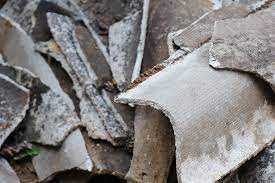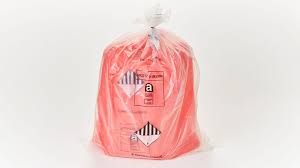Asbestos
Asbestos is a group of six naturally occuring minerals made up of heat resistant fibres[1]. Asbestos fibres do not dissolve in water or evaporate, they are resistant to heat, fire, chemical and biological degradation and are mechanically strong[2].

Introduction[1]
Asbestos was widely used in construction as an effective insulator, and it can be added to cloth, paper, cement, plastic and other materials to make them stronger. Yet when asbestos dust is inhaled or ingested, the fibres can become permanently trapped in the body. Over decades, trapped asbestos fibres can cause inflammation, scarring and eventually genetic damage. Exposure to asbestos can cause cancer and other health conditions. A rare and aggressive cancer called mesothelioma is almost exclusively caused by asbestos exposure. Asbestos also causes a progressive lung disease called asbestosis.
Although asbestos comes from all over the world, the main exporters are Russia, Kazakhstan and China and it was once mined throughout North America. Asbestos may be found in large deposits or as contaminates in other minerals such as talc and vermiculite. Chrysotile asbestos is usually found as veins within serpentine rock. While most commercial asbestos deposits contain 5% to 6% asbestos, some deposits, such as the Coalinga deposit in California, contain 50% or more asbestos[1].
Asbestos is generally divided into two sub-groups; serpentine and amphiboles. Serpentine asbestos (chrysotile or white asbestos) was the most commonly used type of asbestos. Chrysotile asbestos fibres are soft, flexible and curved and far less hazardous than the amphibole type. Amphibole fibres (crocidolite -blue asbestos, amosite- brown asbestos, tremolite, actinolite and anthophyllite) are brittle fibres and are often rod- or needle-like in appearance. It is this form that is more hazardous to health. Crocidolite was the most commonly used amphibole asbestos in the past[2].
The importation, supply and use of all asbestos has been banned in the UK since 1999; the amhibole type has been banned since 1985[2]. Prior to use being banned, asbestos was used in many products including insulation material for buildings, boilers and pipes, car brakes, floor tiles and in 'artex' wall and ceiling decoration.
Solid and fibrous asbestos occurs in a variety of differing forms which need to be managed by different means according to its risk; not all asbestos materials present the same risk i.e. the measures that need to be taken for controlling the risks from materials sush as pipe insulation are different from those needed in relation to asbestos cement[3].
Types of Asbestos[4]
There are six mineral types of asbestos and these are split into two main classes of asbestos:
Serpentine - Serpentine class fibres are curly in appearance. There is only one member in this class of asbestos, called Chrysotile.
- Chrysotile asbestos is obtained from serpentine rocks, which are found commonly throughout the world. Chrysotile appears under the microscope as a white fibre. This type of asbestos has been used more than any other, as it is more flexible than any of the Amphibole class asbestos and can be spun and woven into a fabric.
Use - Its most common use has been in corrugated asbestos cement roof sheets typically used for outbuildings, warehouses and garages. It may also be found in sheets or panels used for ceilings and sometimes for walls and floors. Chrysotile has been a component in joint compounds and some wall plaster. Numerous other items have been made containing chrysotile, including brake linings, fire barriers in fuse boxes, pipe insulation, floor tiles, and gaskets for high temperature equipment.
Amphibole - Amphibole class fibres are needle-like in form. the remaining five types of asbestos fall into this category including Crocidolite, Amosite, Tremosite, Anthophyllite and Actinolite.
- Crocidolite asbestos is the fibrous form of the amphibole riebeckite. Crocidolite is seen under the microscope as a blue fibre. Often referred to as blue asbestos, it is considered the most hazardous. In 1964, Dr Christopher Wagner discovered an association between blue asbestos and the asbestos related cancer mesothelioma. Blue asbestos was also formerly used in early gas masks.
- Amosite asbestos, often referred to as brown asbestos, is seen under a microscope as a grey-white fibre. It is found most frequently in materials used as fire retardants in thermal insulation products, asbestos insulation and ceiling tiles.
- Tremolite, Anthophyllite and Actinolite asbestos are used less commonly industrially, but can still be found in a variety of construction and insulation materials, and have even been reported to be found in a number of consumer products in the past.
Legislative Control
The Control of Asbestos Regulations 2012 came into force on 6 April 2012, updating previous asbestos regulations to take account of the European Commission's view that the UK had not fully implemented the EU Directive on exposure to asbestos (Directive 2009/148/EC)[5].
For those working with or in an environment that may contain asbestos, disturbs or is likely to disturb asbestos, asbestos sampling and laboratory analysis the Control of Asbestos Regulations 2012, the Approved Code of Practice (ACOP) and guidance text for employers sets out the legal duties with the ACOP and guidance giving practical advice on how to comly with the legislation. The Regulations give minimum standards for protecting employees from the risks associated with exposure to asbestos[6].
The Regulations contain new requirements for certain types of non-licensable work with asbestos on notification of work; designating areas where you are working on asbestos; medical surveillance and record keeping[6].
Waste containing Asbestos
The Waste Classification: Guidance on the classification and assessment of waste - Technical Guidance WM3 [7] document provides guidance and examples to show how waste classification and assessment is applied to construction and demolition waste and waste soil.
All forms of asbestos are classisifed in the same way in a harmonised entry in the Classification and Labelling Inventory as:
- Carc. Cat 1A, H350, and
- STOT RE1; H372**
The assessment of waste containing asbestos considers both the presence of asbestos as[7]:
- fibres that are free and dispersed, and
- identifiable pieces of asbestos containing material i.e. visible to the naked eye e.g. cement sheeting or floor tiles
If the waste contains fibres that are free and dispersed then the waste will be hazardous if the waste as a whole contains 0.1% or more asbestos
If the waste contains any identifiable pieces of suspected asbestos containing material (ACM) it must be assessed as that. This would also apply to any dispersed fibres produced by deliberately breaking up such identifiable pieces[7].
Where the waste contains identifiable pieces of asbestos containing material (ACM) (i.e. any particle of a size that can be identified as potentially being asbestos by a competent person if examined by the naked eye), then these pieces must be assessed separately. The waste is hazardous if the concentration of asbestos in the piece of asbestos containing material is 0.1% or more. The waste is regarded as a mixed waste and classified accordingly. The following codes should be assigned to the asbestos waste as appropriate[7]:
- 17 06 05* construction material containing asbestos
- 17 06 01* Insulation material containing asbestos
17 06 05* would normally be used in preference to 17 06 01* for the asbestos in asbestos contaminated soils
The only way to confirm definitively if waste does contain asbestos fibres is to have a representative sample of the waste analysed in an accredited analytical laboratory[8]. Laboratories undertaking this analysis must be accredited to International Standard ISO/IEC 17025 (Control of Asbestos Regulations 2012) and be accredited the United Kingdom Accreditation Service (UKAS)[8].
Management of Asbestos
Asbestos is dangerous only when disturbed. If it is safely managed and contained it doesn't present a health hazard[3] but asbestos shoud not be removed unnecessarily as removing it can be more dangerous than leaving it in place and managing it[3].
If ACMs need to be sealed, encapsulated or removed this can only be carried out by licensed contractors if the materials are high risk (e.g. pipe insulations and asbestos insulating panels). If the materials are lower risk (e.g. asbestos cement sheets and roofing) then an unlicensed but competent contractor may carry out this work[3].
Asbestos generated from repairs to property i.e. asbestos roofing is hazardous waste and most be treated and disposed of such. Most Local Authorities (LAs) issue asbestos permits to householders needing to remove of this low risk asbestos which allows them to deposit household asbestos at suitably licensed facilities such as Household Waste Recycling Centres or Transfer Stations used by the LAs. There is often a charge associated with this facility.
In this instance the asbestos must be double bagged in appropriately labelled bags which highlights its hazardous contents.
High risk asbestos must be managed, transported and disposed of only by approporiately licensed contractors and transferred to licensed hazardous waste landfills or to seperate engineered cellls within a Landfill where Stabilised Non-Reactive Hazardous Waste can be disposed of.


